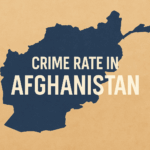Afghanistan is a country deeply rooted in its religious identity. In 2025, Islam continues to dominate as the primary faith, shaping the country’s laws, culture, and daily life. But Afghanistan’s religious landscape, while mostly homogenous, has subtle layers worth understanding. This article explores the percentage of religions in Afghanistan, their history, and how religion affects life in the country today.
Islam: The Predominant Religion
Islam is followed by the overwhelming majority of Afghans. Over 99% of the population in Afghanistan identifies as Muslim in 2025. Islam is more than just a belief system—it is woven into the constitution and laws of the country.
Sunni Muslims
Roughly 85–90% of Muslims in Afghanistan are Sunni Muslims, mainly following the Hanafi school of Islamic jurisprudence. Sunni Islam influences the country’s education, legal system, and political life.
Shia Muslims
An estimated 10–15% of the Muslim population are Shia Muslims, mostly from the Hazara ethnic group. The Shia community primarily follows the Twelver school, and they are more prominent in central Afghanistan, particularly around Bamiyan and Daykundi.
Minority Religions in Afghanistan
Although non-Muslim groups are extremely small and often face challenges, they still exist in Afghanistan’s historical and cultural memory.
Sikhism and Hinduism
These two religions have historical roots in Afghanistan, especially in Kabul and parts of eastern Afghanistan like Jalalabad. However, as of 2025, only a few hundred Sikhs and Hindus remain in the country, mostly due to decades of conflict and persecution.
Christianity
Christianity is not officially recognized in Afghanistan. Most Christians practice their faith in secrecy. Estimates suggest there may be fewer than 1,000 Christians in the entire country, mostly converts or foreign nationals.
Judaism
Once home to a small but vibrant Jewish community, Afghanistan now has no known Jewish residents. The last known Jewish citizen left in the early 2020s.
Baháʼí Faith
The Baháʼí community in Afghanistan is very small and often not publicly visible. Due to the sensitive nature of religious identity in Afghanistan, they generally practice quietly.
Religion and Government
Afghanistan’s government structure is heavily influenced by Islamic law. In 2025, the ruling authorities continue to base legislation and judicial rulings on Sharia law, which affects:
- Women’s rights
- Religious freedoms
- Education systems
There are no constitutional protections for the practice of non-Islamic religions, and proselytizing is strictly forbidden.
Regional Differences in Religious Demographics
Though Sunni Islam is dominant nationwide, regional variations do exist:
- Central Afghanistan (e.g., Bamiyan, Daykundi): Higher percentage of Shia Muslims (Hazara community)
- Kabul and Herat: More ethnically and religiously diverse, though still majority Sunni
- Eastern Afghanistan: Historically had Hindu and Sikh communities, now largely diminished
Changes Over Time
From 2020 to 2025, the religious makeup of Afghanistan has remained largely consistent, with minor decreases in the already small minority populations. This is due in part to emigration, lack of legal protection, and societal pressures.
2020 vs 2025 Religion Percentages:
| Year | Islam (%) | Shia (%) | Sikh/Hindu (%) | Christian (%) | Jewish (%) |
|---|---|---|---|---|---|
| 2020 | 99.7 | 10–15 | <0.01 | <0.01 | 0 |
| 2025 | 99.8 | 10–15 | <0.005 | <0.005 | 0 |
Freedom of Religion
Afghanistan ranks among the least religiously free countries in the world. Religious minorities often face:
- Legal restrictions
- Social harassment
- Risk of persecution or violence
International human rights organizations frequently raise concerns about religious freedom and the treatment of minorities, especially since the political shift in 2021.
Final Thoughts
In 2025, Afghanistan remains overwhelmingly Islamic with very little religious diversity. While Sunni Islam is dominant, Shia Muslims maintain strong regional presence. Non-Muslim communities have largely disappeared due to conflict, legal constraints, and emigration.
Understanding the religion percentage in Afghanistan helps contextualize the country’s politics, culture, and challenges. Though religious diversity once played a role in its history, Afghanistan today is one of the most religiously uniform countries in the world.

